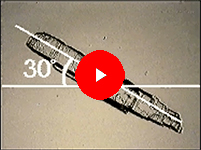
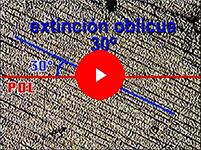
Extinction angle
This is the angle formed by one line of the crystal with the extinction position. Either the longest dimension of the mineral or the system of cleavage lines are generally used as this line of reference.
In order to determine the angle, at first only the polariser is incorporated and the line is made to coincide with the direction of the polariser (E-W). The analyser is introduced and turned slowly until extinction occurs and the angle turned will be the extinction angle.
If the angle is greater than 45°, the analyser should be turned the other way to find the real angle. If the extinction occurs when the reference direction of the mineral (longest side of the crystal, exfoliation direction...) coincides with the direction of vibration of the polarizer, the extinction angle is 0° and the mineral is said to present straight extinction.
The measurement of the extinction angle is of more importance if it is measured in relation to a certain direction of vibration, e.g. the slow component of the mineral.
Some examples of crystals with straight extinction*
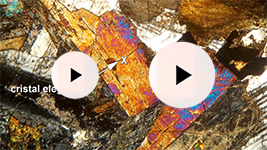 |
 |
|
| You can also proceed in reverse, look for extinction and turn until the exfoliation lines are established. | ||
 |
 |
 |
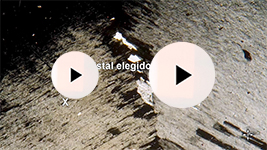 |
 |
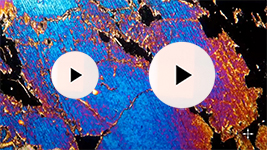 |
 |
||
| If the measured angle is greater than 45 degrees, we must find the complementary angle | ||
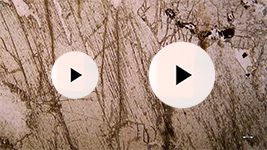 |
||
| The line chosen as a reference can be the direction of a twin. In this case, we always work with the polarizer and the analyzer incorporated into the microscope. | ||
Some examples of crystals with straight extinction*
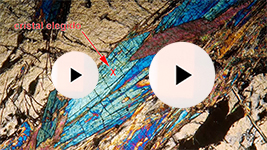 |
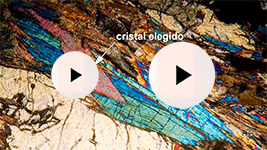 |
 |
 |
You can also measure the extinction angle on a video
* The angle rotated from the coincidence of the chosen line and the polarizer until reaching the extinction position (extinction angle) is measured directly on the microscope stage, but in these videos we are going to measure it with the help of a protractor.
Index | Introduction | PPL | XPL orthos